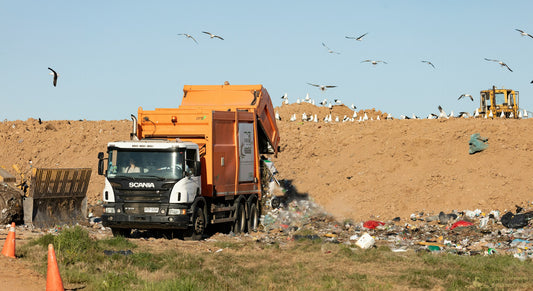Share
Synagro, a company owned by a Goldman Sachs fund, has been reaping profits for years from a peculiar source - sewage sludge! Quite unexpectedly, this waste product makes a handy fertilizer when treated. Known also as ‘biosolids,’ it’s sold to farmers who apply it liberally to their croplands, unknowingly inviting some unwelcome guests into their fields. Those guests? Forever chemicals, such as PFAS, notorious for their stubborn persistence and linked to dreadful health conditions like cancer and birth defects.
Sludgy Affairs: Unwanted Guests in Farmlands:
This chemical intrusion didn't slip under the radar for long. Farmers, soon enough, discovered these harmful contaminants tainting their soil, water bodies, crops, and livestock alike. Besides raising alarm, the revelation sped up regulatory action, leading to the classification of two common PFAS types as hazardous substances under the Superfund law earlier this year.
Legal Tug-of-War: Farmers vs Fertilizer Makers:
The plot thickens as Synagro, now on the defensive, has joined hands with other fertiliser makers in a significant lobbying effort to deter farmers and others from launching lawsuits aimed at cleaning up fields tainted by the noxious sludge fertilizer. Synagro’s CEO sits as the chairman of one of these lobbying groups, adding gravity to this concerted initiative.
Deflection Tactics: A Lobbying Success?
In their defensive move, the fertilizer industry lobbyists have passed the buck onto the original sludge producers, asserting that the suspect chemicals were already present when they received the sludge and processed it into fertilizer. Surprisingly, this reasoning has found some traction. Senators John Boozman and Cynthia Lummis have introduced a new bill offering legal shields to sludge companies like Synagro, and the wastewater plants supplying the sludge, against any lawsuits.
This all makes for a tangled tale where financial interests, environmental dilemmas and political strategies intertwine, with repercussions that will affect our food system, environment and public health. Only time will tell who emerges victorious in this sludgy rollercoaster!
Sludgy Affairs: Unwanted Guests in Farmlands:
This chemical intrusion didn't slip under the radar for long. Farmers, soon enough, discovered these harmful contaminants tainting their soil, water bodies, crops, and livestock alike. Besides raising alarm, the revelation sped up regulatory action, leading to the classification of two common PFAS types as hazardous substances under the Superfund law earlier this year.
Legal Tug-of-War: Farmers vs Fertilizer Makers:
The plot thickens as Synagro, now on the defensive, has joined hands with other fertiliser makers in a significant lobbying effort to deter farmers and others from launching lawsuits aimed at cleaning up fields tainted by the noxious sludge fertilizer. Synagro’s CEO sits as the chairman of one of these lobbying groups, adding gravity to this concerted initiative.
Deflection Tactics: A Lobbying Success?
In their defensive move, the fertilizer industry lobbyists have passed the buck onto the original sludge producers, asserting that the suspect chemicals were already present when they received the sludge and processed it into fertilizer. Surprisingly, this reasoning has found some traction. Senators John Boozman and Cynthia Lummis have introduced a new bill offering legal shields to sludge companies like Synagro, and the wastewater plants supplying the sludge, against any lawsuits.
This all makes for a tangled tale where financial interests, environmental dilemmas and political strategies intertwine, with repercussions that will affect our food system, environment and public health. Only time will tell who emerges victorious in this sludgy rollercoaster!
We hope you enjoyed this article. Please feel free to leave a comment below if you want to engage in the discussion.
If you want to read more like this, make sure to check out our Blog and follow us on Instagram. If you are interested in truly sustainable products, check out our Shop.
Check out the original source here.








